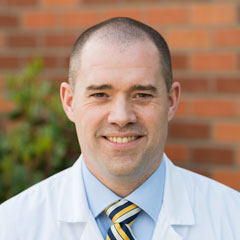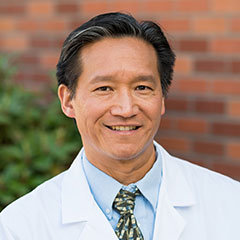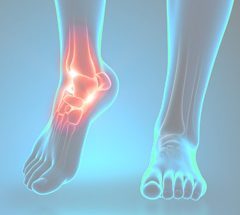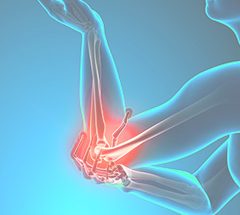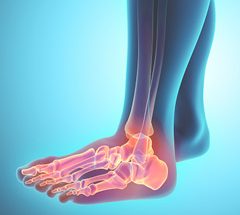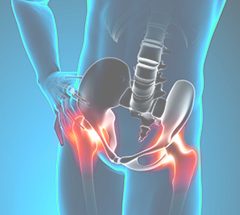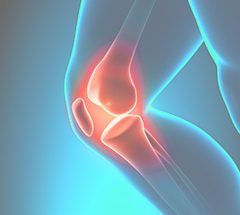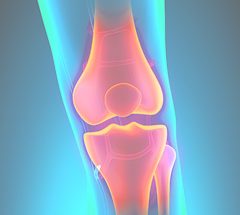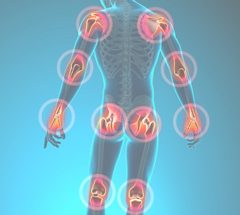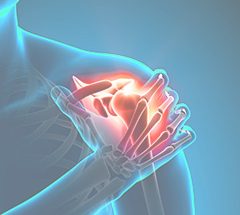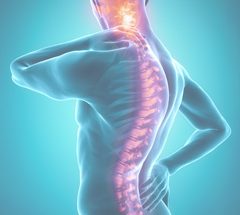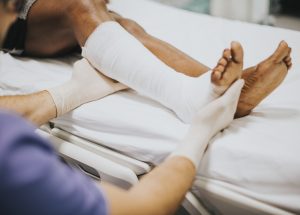Anterior Cervical Discectomy and Fusion (ACDF)
Learn more about what is involved when an anterior discectomy and fusion is performed on your neck.
An intervertebral disc is a kidney-shaped structure located between each pair of vertebrae. They are designed to redistribute forces incurred by the spinal column when sitting, standing, or lifting. The intervertebral disc is composed of two types of cartilage. There is an inner semi-liquid cartilage (nucleus pulposus) surrounded by several layers of fibrous rings of cartilage (annulus fibrosis). Together they form a self-contained unit.
What causes a nerve to be pinched?
Over time with repeated stresses, the fibers of the ring can weaken and allow the nuclear material to escape. This phenomenon is known as a herniated disc or ruptured disc. It usually ruptures to one side affecting one shoulder or arm. It can occasionally rupture in the middle pushing on the spinal cord and can affect both arms and legs.
In response to the degenerative process, your body may form extra bone resulting in bone spurs. If the spurs pinch a nerve, it can cause shoulder or arm pain. When bone spurs push directly on the spinal cord, symptoms may manifest diffusely in both arms and/or legs. Problems may include poor balance, shock-like sensations in the arms or legs, generalized weakness, and alteration of bowel and/or bladder control. Although pinched nerves may cause shoulder, arm or leg symptoms they are not generally considered to be a cause of neck pain.
What is an ACDF?
An ACDF (anterior cervical discectomy and fusion) is surgery designed to take two vertebrae in your neck and “fuse” them together with a piece of bone. First, the disc is removed and then bone is placed between the vertebrae in the front (anterior) part of your cervical spine. The bone may be taken from your pelvis or provided by a cadaver donor (allograft). It takes the body approximately three months to fuse the vertebrae together.
What are the main reasons for performing an ACDF?
This procedure is most commonly performed to relieve pain in the shoulder and arm. If your pain is mild and tolerable, we do not recommend you proceed with surgery. Isolated numbness, tingling, or the loss of a reflex usually is not sufficient reason to warrant surgery. If you have symptoms of spinal cord compression, surgery is often indicated to prevent further deterioration. In this situation, the return of function is unpredictable. Neck surgery is not very effective in relieving neck pain in and of itself. Neck pain is thought to originate more from the soft tissues around the neck and is typically treated with rehabilitation.
What is the chance of a successful outcome?
If you have a specific nerve pinched and the pain pattern in the shoulder and arm matches the path of the nerve, the chance of a successful outcome is greater than 90%. If the pattern of pain is more widespread and the pathology requires surgery at multiple levels, the chance of success is somewhat lower. The surgery does not reliably help relieve isolated mechanical neck pain.
What happens during surgery?
You are positioned with your face up. The surgeon makes an incision on either the right or the left side of your neck. The muscles are elevated and the trachea, esophagus, and major blood vessels are gently retracted. The physician then brings a microscope into this field and removes the disc between your vertebrae. A piece of bone from your iliac crest (hip area) or from cadaver bone (allograft) is placed into this space to restore the height between the vertebrae. This will eventually turn into a solid piece of bone. A plate is often screwed over the bone graft to secure it. A small drain is often placed to prevent excessive fluid from collecting. The drain is removed the next day before you are discharged home.
What will the hospital stay be like?
After you are checked into the hospital, an anesthesiologist will interview you prior to your surgery. The surgery will take two to three hours to complete and afterwards you will be brought to the recovery room where you will remain for approximately one hour.
After surgery patients typically have significantly less arm pain, although, your neck may be quite sore. Even though the size of the incision is small, pain should be expected as your muscles were manipulated during the procedure. We have found that there is a lower incidence of complications if you are mobilized early. You may be able to get out of bed and begin walking with help just a few hours after you are taken to your room.
Due to the combination of anesthesia and pain medications, you may feel nauseated and have difficulty urinating. A significant number of patients require a catheter in their bladder to enable them to urinate. You may go home once your pain can be controlled with pills, your bowel and bladder are functioning normally, and you are able to eat food. Most patients are ready to go home the day following surgery.
What will I be allowed to do when I go home?
If you have had a plate used to secure the graft, a soft cervical collar is generally used only for comfort. Self-care should not be a problem. Repetitive quick movements of your neck should be avoided.
Within the first few weeks following discharge, we encourage you to begin walking for one half hour to two hours each day in divided intervals. You should be able to go up and down stairs and perform basic daily activities without too much difficulty.
You should avoid excessive bending or twisting of your neck as that increases the stress across the fusion site. It usually takes a minimum of three months for the fusion to heal; patients who are placed in a hard cervical brace require it for this entire time period. The timeframe in which you can return to work depends on your recovery. Each patient has a unique set of work-related issues, which will need to be discussed with your physician.
The first office visit should be scheduled two weeks after you are discharged. The purpose of this visit is to check your incision and make sure you are progressing as planned. The subsequent visits are typically scheduled at six weeks and at three, six, 12, and 24 months after surgery. Your doctor will give you the exact times you should follow-up. During each visit, the status of your fusion is assessed. Your physician will prescribe a rehabilitation program based on your specific needs.
When can I return to work?
Each situation is unique and should be discussed with your physician prior to surgery.
Should I have the surgery?
An anterior cervical discectomy and fusion (ACDF) is a commonly performed surgery with generally great results. However, it is not risk-free. You should have a specific goal in mind as to which pains might be relieved and what the odds are of success. The final decision should be based on your perception of pain, weakness, and disability. We hope that by providing you with as much information as possible about the surgery, you can determine if the pain you are experiencing is worth the risk of surgery.



